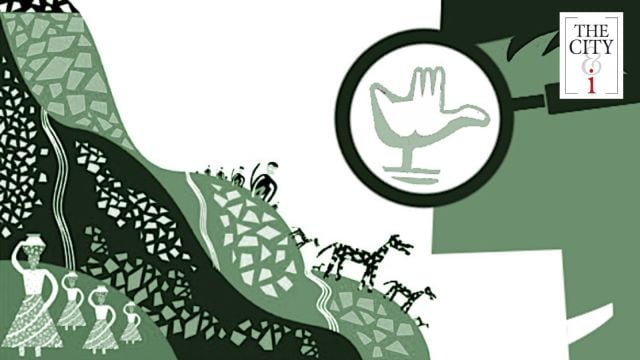
Wriiten by Janaki Srinivasan
When I moved to Chandigarh from Delhi almost two decades ago, I found the lack of built history the most unsettling feature of an otherwise seamless move. I yearned, not as much for the spectacular heritage structures of Delhi that weave in many of the big moments of subcontinental history, but for the humble stone-and-rubble masonry edifices — tombs, mosques, pavilions, turrets, stepwells — that dot the national capital. In comparison, the relentless grey of Chandigarh’s cityscape and the severe uniformity of its grid-based sectoral plan provided cold comfort.
My search for monuments meant following the many roads leading out of this union territory to the three states that border it. At some point, it also intertwined with a quest to grasp the city’s self-understanding. I found a profound disconnect felt by the residents with the Corbusierian legacy even when they frequently use its two defining adjectives — modern and planned — to argue in favour of a city they clearly love and idealise. Most residents have either not stepped into or remain untouched by the Capitol Complex, a UNESCO World Heritage site and the pinnacle of Corbusier’s grand experiment with modernist architecture. Cordoned off during the militancy years, it opened to the public only in 2014. The two museums that record the making of the city came up even later. No information or description accompanies (nor are heritage walks held in) those landmark buildings (and sculptures) that are actually frequented by the public — be it the Government Museum and Art Gallery complex, the Gandhi Bhawan or Student Centre in Panjab University or even the famed Sector 17 plaza.
Residents are likewise ignorant of the few remnants of pre-city history. Harappan-era artefacts found during the construction of the city are tucked away in one room of the Le Corbusier Centre. A string of small fortified palaces that encircle the region can be dated from the Mughal period onwards; these comprised jagirdaris and little kingdoms that owed allegiances to the succession of bigger powers that ruled over this northwestern part of the country. Most of these forts are in an advanced state of ruin due to neglect and/or litigation. In the case of Burail, the only heritage structure within the sectoral map of the city, the fort complex is a mesh of numerous privately owned residences, including the bastions, one of which has been remade into houses; the others will likely follow suit.
In this sea of ignorance, the Rock Garden seems to be the point of convergence, holding the city together. This came across sharply in the past month, when the act of the city administration to raze a section of the garden’s outer wall and fell trees to widen the road alongside it to ease parking for the High Court complex has been met with vocal and continuous protests. Citizens have termed this an assault on the heritage of the city and the media is flooded with nostalgic accounts underlining the significance of the garden to the lives and memories of the residents. Nek Chand’s Rock Garden, built in stealth over 15 years before being discovered, is in many ways the antithesis of Corbusieran Chandigarh. For long, I have struggled with my contradictory feelings about this sculpture sprawl. Its befuddling aesthetic comes dangerously close to cringe but ends up at charm; it provokes constant speculation about whether and when the lines between strategic placement and philosophical statement intersect, overlap or run parallel to each other. Made out of the same concrete that fascinated Corbusier, it nevertheless imitates the conventions of traditional heritage structures assiduously avoided by high modernism. Curvy, narrow passageways lead towards pavilions, colonnades, archways, fortifications, gorges and waterfalls even as rows and rows of animal and human figures seem to monitor one’s progress through the pathways. Made out of construction waste from uprooted villages and the under-construction city, as well as from natural artefacts and items of everyday use, I wonder if Rock Garden provided the link between the past and present for people who needed to distance themselves from their immediate histories. Or, does it embody the view that a settlement flourishes only when it refuses to abide by the rigid rules of order imposed from above and makes way for spontaneity and organic growth?
As I slowly explored the history of the region, I came to see that while this particular parcel of land that became a greenfield city is enmeshed within the crosscurrents of this geo-historical region, it has stood in proud isolation from it. The distance from history has perhaps offered a new form of belonging to those flooding the city and stretching its de-facto boundaries in the direction of a metropolis. Located at the confluence of three states with a shared contentious history leading to conflicting claims on resources and meaning, Chandigarh’s detachment means it is unperturbed by the allegiance sought by larger linguistic, ethnic or regional entities. It offers a sense of home while being comfortable with the other homes that its residents feel part of. I have never felt that I had to choose between Chandigarh and Delhi. There are monuments in Delhi I am yet to visit, and I will never have enough of the same view of the Himalayas from the Sukhna lake. I go home to Delhi and come back home to Chandigarh.
The writer teaches Political Science at Panjab University, Chandigarh